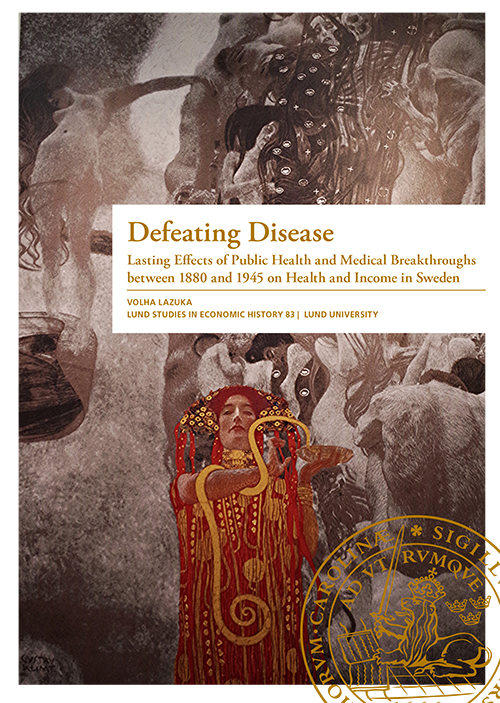This thesis has the general aim of exploring the role of public health and medical innovations between 1880 and 1945, targeting infectious diseases, in health and income improvements in Sweden throughout the twentieth century. It applies methods of causal inference to longitudinal individual-level data from both local and national datasets combined with multisource archival data on the implementation of reforms. The bacteriological discoveries of the latter part of the nineteenth century helped the public to target infectious diseases through isolation, disinfection and treatment with antibiotics. The studies of this thesis show that health interventions have had a sizable role in the contemporaneous decline in infectious disease rates. Moreover, these studies find that by reducing the likelihood of infection, societal health measures led to beneficial consequences for the income and long-term health of the affected cohorts, extending through old age.
This thesis therefore supports the endogenous growth theory, which posits an interaction between health improvements in early childhood and health technology, based on application of the germ theory of disease, as a determinant of economic growth in the long run. Although the health benefits due to this dynamic process cannot be viewed as a main driver of economic growth, societal health investments nonetheless led to income growth sufficient to yield a high rate of return on the investment. The cause – that is, the reforms under study that are targeting infectious disease – and the consequence, reductions in the rates of specific chronic diseases in adulthood and old age, point to the inflammation mechanisms behind the lasting effects. The studies also suggest that the early neonatal period and infancy are the critical period for intervening such processes.


